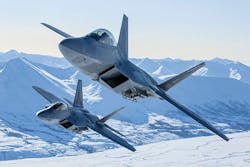Air Force weapons strategy seeks to learn quickly to make incremental technological advancements
The Military & Aerospace Electronics take:
7 March 2019 -- The approach calls for rapid and early prototyping of new weapons to determine quickly what works, says William Roper, assistant secretary of the Air Force for acquisition, technology & logistics.
The approach adds risk -- a necessary part of the process -- he says. While rarely desired, failure is an opportunity to learn quickly and make adjustments early in the acquisition process to keep pace with anticipated emerging threats.
There is no mystery about why the Air Force is emphasizing this approach; potential US adversaries are making technological advancements at an alarming rate; anti-satellite weapons, hypersonics, artificial intelligence (AI) and stealth may be surpassing or at least seriously rivaling U.S. technological superiority.
Related: The next super weapon: believe me, nobody's ready for it
Related: Laser weapons show their stuff in real-world conditions
John Keller, chief editor
Military & Aerospace Electronics
Ready to make a purchase? Search the Military & Aerospace Electronics Buyer's Guide for companies, new products, press releases, and videos
